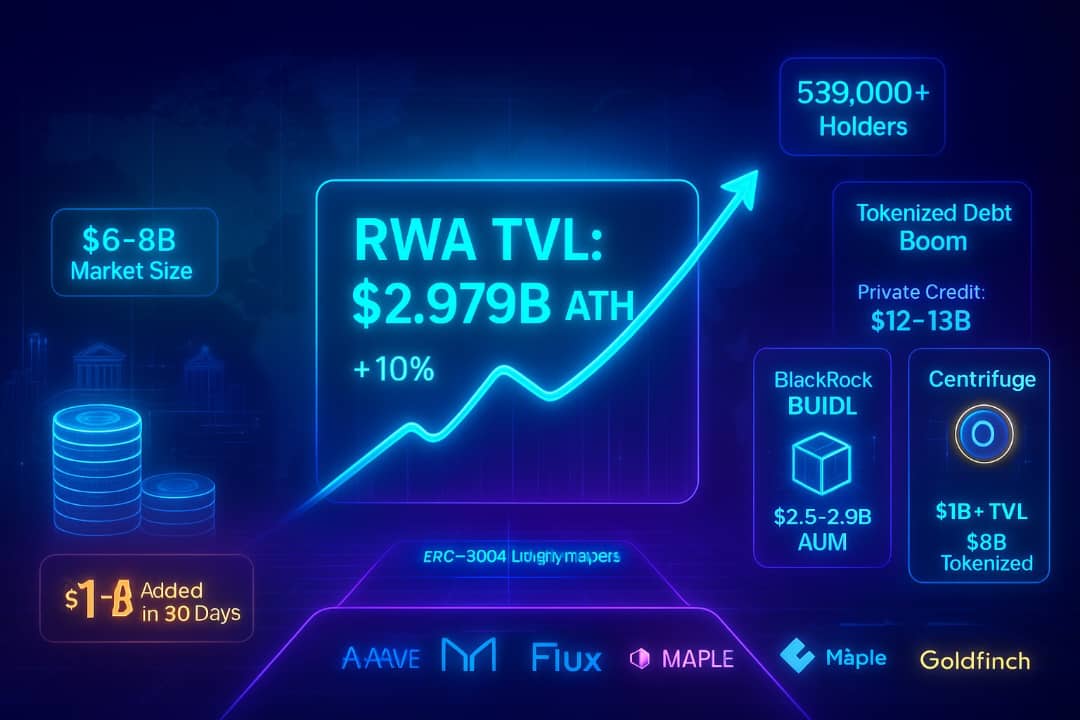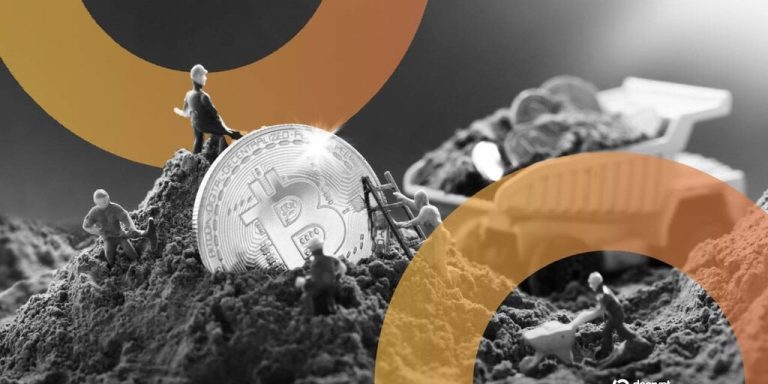
The Evolution of Tokenized Real World Assets (RWAs)
The tokenized Real World Asset (RWA) market is making significant strides, achieving remarkable milestones in recent months. By November, the total on-chain RWA Total Value Locked (TVL) reached an impressive $2.979 billion, reflecting a 10% month-over-month growth. This surge showcases growing adoption across institutional finance and decentralized finance (DeFi) sectors, driven by innovative blockchain-enabled financial products.
RWA Adoption Accelerates
According to data from rwa.xyz, the RWA space has recorded over 539,000 unique holders. This uptick in interest highlights a growing mainstream appetite for yield-bearing, blockchain-native assets. As financial institutions and DeFi platforms integrate these products, experts predict that this market could expand into a multi-trillion-dollar sector in the coming years.
Here’s a closer look at the state of the RWA market and the key products driving its rapid adoption.
Tokenized U.S. Treasuries: A Standout Performer
Tokenized U.S. Treasuries remain the most robust category in the RWA market. With an estimated market size of $6–8 billion—$1 billion of which was added in the last 30 days—these assets offer stable and regulated yields during volatile times. They have quickly become a go-to choice for institutional investors seeking exposure to government debt with the added benefits of blockchain innovation, such as instant settlement and enhanced global liquidity.
Among the leaders in this space is the BlackRock BUIDL Fund, boasting $2.5–2.9 billion in Assets Under Management (AUM). This fund exemplifies the market’s potential by combining institutional-grade trust, compliance, and liquidity within a multi-chain framework.
Private Credit: Dominating the RWA Landscape
Private credit accounts for an estimated $12–13 billion in tokenized value, making it the largest RWA segment. This category appeals to investors seeking higher yields and predictable repayments. Platforms like Centrifuge have facilitated the tokenization of over $8 billion in private credit assets, positioning themselves as leaders in invoice financing and asset-backed loan pools.
Disruptive Trends in RWA Technology
The advent of dual-rail models—combining private permissioned chains for asset issuance and public blockchains for liquidity—is becoming the industry standard. This approach allows institutions to maintain control while harnessing the innovative power of DeFi ecosystems.
For example, platforms like Ondo Finance are redefining the landscape with yield-bearing stablecoin solutions like USDY, which derive their value from real income-generating assets. These advancements could signal the next evolution of stablecoins, pushing the sector toward fully collateralized and revenue-driven models.
Challenges Ahead: Centralization and Regulatory Clarity
Despite its rapid growth, the RWA market faces two key challenges:
- Centralization Concerns: Many RWA products rely on centralized custodians and trust entities, creating operational bottlenecks in an otherwise decentralized ecosystem.
- Regulatory Uncertainty: Tokenized securities and yield products operate under inconsistent regulatory frameworks across jurisdictions, which could impact the pace of adoption.
Nevertheless, with forecasts from Boston Consulting Group and Standard Chartered predicting a $16–30 trillion RWA market by 2030, it’s evident that this sector is on the cusp of transforming global finance.
The Future of Tokenized Assets
The potential for tokenizing equities, real estate, global credit markets, and more heralds a new era of blockchain adoption. As these integrations deepen and institutions embrace compliance-friendly frameworks, RWAs are set to form the backbone of the blockchain-finance nexus.
Looking to explore tokenized assets or consolidate your blockchain portfolio? Many products, like the BlackRock BUIDL Fund, offer secure and compliant solutions for investors seeking stability and yield in a rapidly evolving market.



